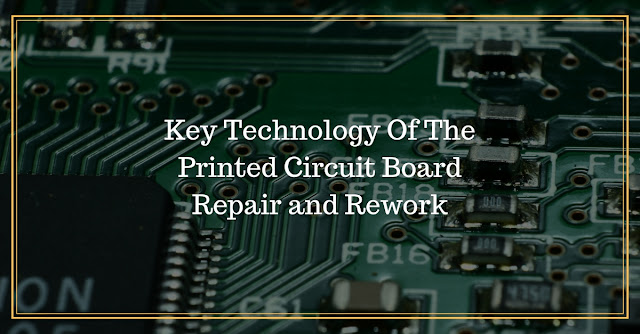Key Technology Of The Printed Circuit Board Repair and Rework
Today, PC boards are complicated
than ever before; however, despite being severely damaged, they can be repaired
and reworked. Indeed the high value of many PC boards’ demands for repair, also
less expensive assemblies, as just-in-time manufacturing and tightly controlled
production runs leave little room for the shortage. In electronics assembly
process procedure, repair is very reliable.
SMT help for successful repair of
two of the most key technology which is most likely to lead to ignoring the
problem.
•
To flow again before appropriate preheating of PCB
•
Reflow rapid cooling after solder joints
Because the two fundamental process
often overlooked by repair technicians, in fact, sometimes the situation is
even worse than before and after repair. Although some "repair"
defects can sometimes get processed after inspectors found, however in most
cases, it always looks not to come out, but soon exposed in the circuit after
the test.
Over a protracted period to be
sure, PCB Assembly processing under high temperature, i.e., 315-426 will bring
a lot of potential problems. Thermal damage, such as welding plate and warping,
lead to the substrate layer, raw white spot or blister, become angry. Board up
and burned usually noticed by inspectors. However, precisely because not
"burning board" is not to say "plate is not damaged.
High-temperature damage to PCB's "intangible" problem is more serious
even than those listed. For decades, countless times test repeatedly proved PCB
and its components can "through" rework after inspection and testing,
the attenuation rate is higher than normal PCB. Within the substrate warp and
"invisible" problem such as the attenuation of circuit components
from different materials with different expansion coefficient. These problems will
not expose itself even if it has not been found at the beginning of the test
circuit, but is still lurking in the PCB components.
Given the fact, PCB assembly reflow
process includes in the stage of preheating before flow again. Regardless of
the PCB assembly is to use wave soldering, infrared vapour phase or convection
reflow soldering, each method generally is conducted to preheat or heat
preservation processing, the temperature is in commonly 140-160. Before the
implementation of reflow soldering, using simple short preheating PCB can solve
many problems at the time of repair. It has been for several years in the
reflow soldering process history of success. Therefore, the benefits of PCB
components before reflow preheated is multifaceted.
PCC offers swift
turnaround PCB Repair and Rework services in an entirely controlled ESD
compliant facility. Adhering to IPC and JEDEC artistry standards, we specialize
in both assembled and open circuit board repair and rework. We have a skilled
workforce who are regularly trained and continually assessed by our in-house
certified trainers.
Our facilities are AS9100C &
ISO 9001:2008 accredited. We have the most advanced computer controlled PCA,
and BGA reworks stations that ensure the accuracy of work. Our portfolio of
global customers, OEM companies along with our 27 years of experience,
validates our reliability as a leading PCA Repair and rework service provider.




Thank You for this wonderful and much required information Best Cable Assemblies in India and USA
ReplyDelete